Photos: Ancient Egyptian Statues of Deities Found in Pit
Buried deities
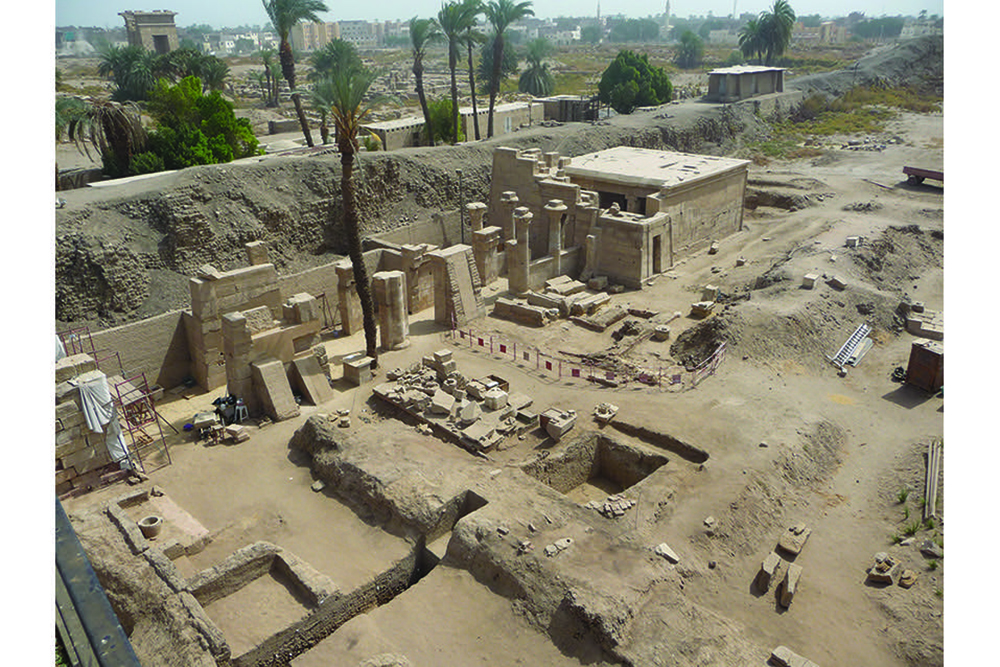
More than 2,000 years ago, ancient Egyptian priests buried a sacred statue of Ptah, the god of craftsmen and sculptors. During its "lifetime," Ptah's statue was likely well cared for, with priests washing it, perfuming it, dressing it and feeding it. But over the years, the Ptah statue accumulated damage, prompting the priests to give it a respectful burial.
The priests also buried a number of other sacred statues that had deteriorated over time. This burial is known as a favissa — a grave, of sorts, for sacred objects that were no longer in use.
The favissa also had 14 statues and figurines of the god Osiris, the god of fertility, the dead and of rebirth. It's possible that by placing Osiris with Ptah, the priests were preparing Ptah for rebirth, the researchers said. [Read the full story on the Egyptian burial here]
Treasure map
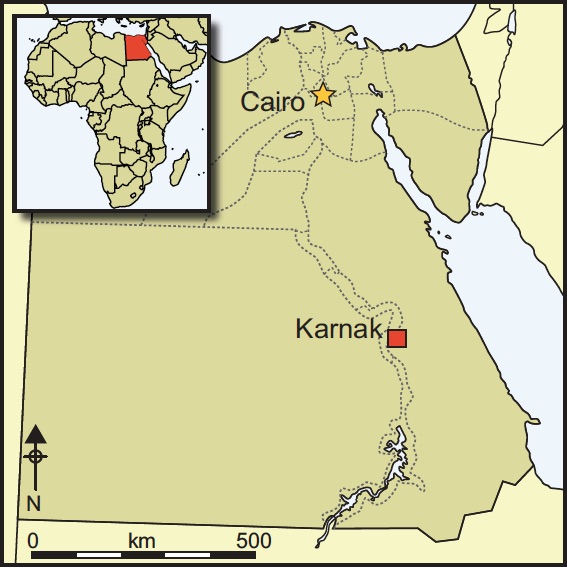
Archaeologists found the favissa at the Karnak temple complex in 2014.
Temple territory
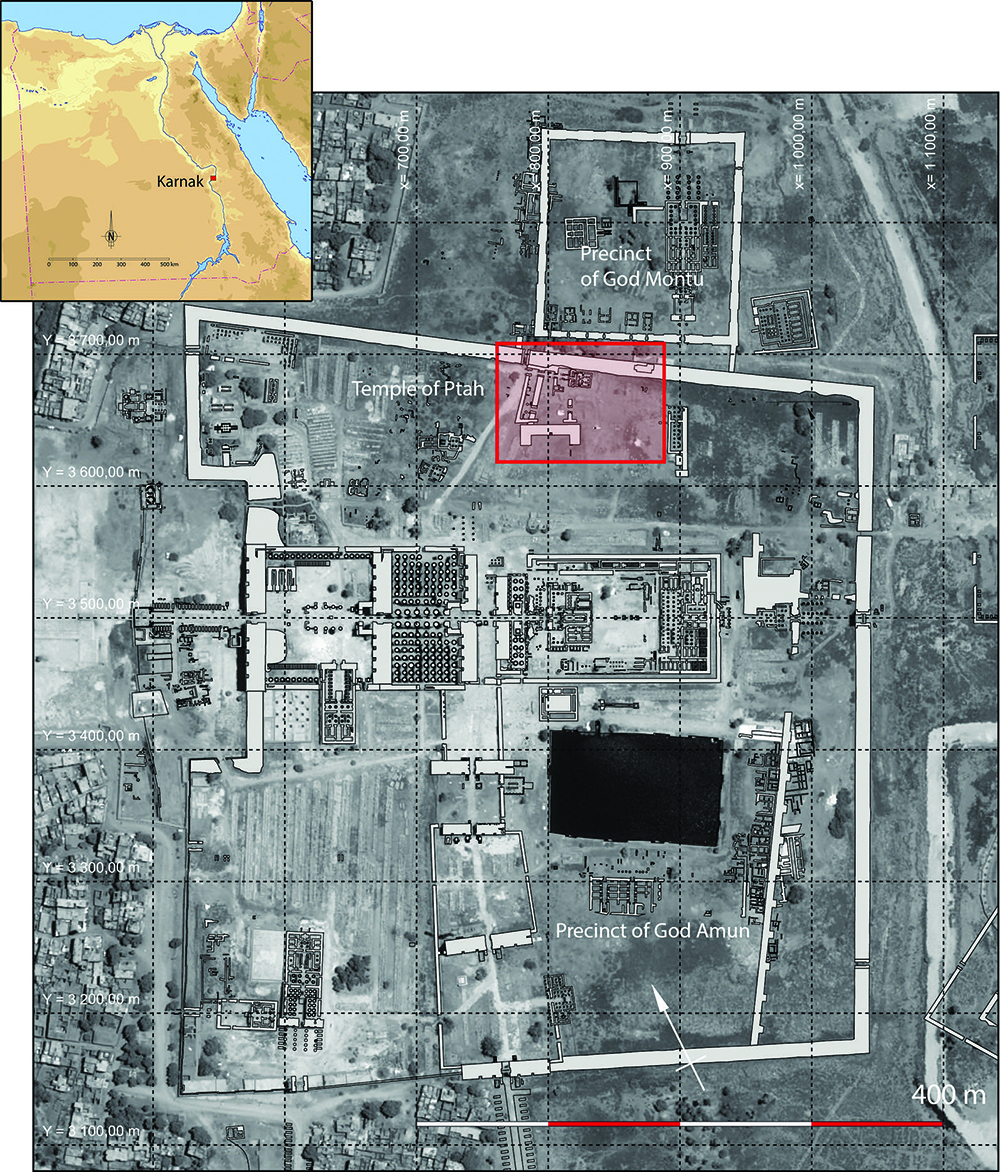
The location of the Temple of Ptah, where the ancient statue was likely located before its burial.
Ptah's temple
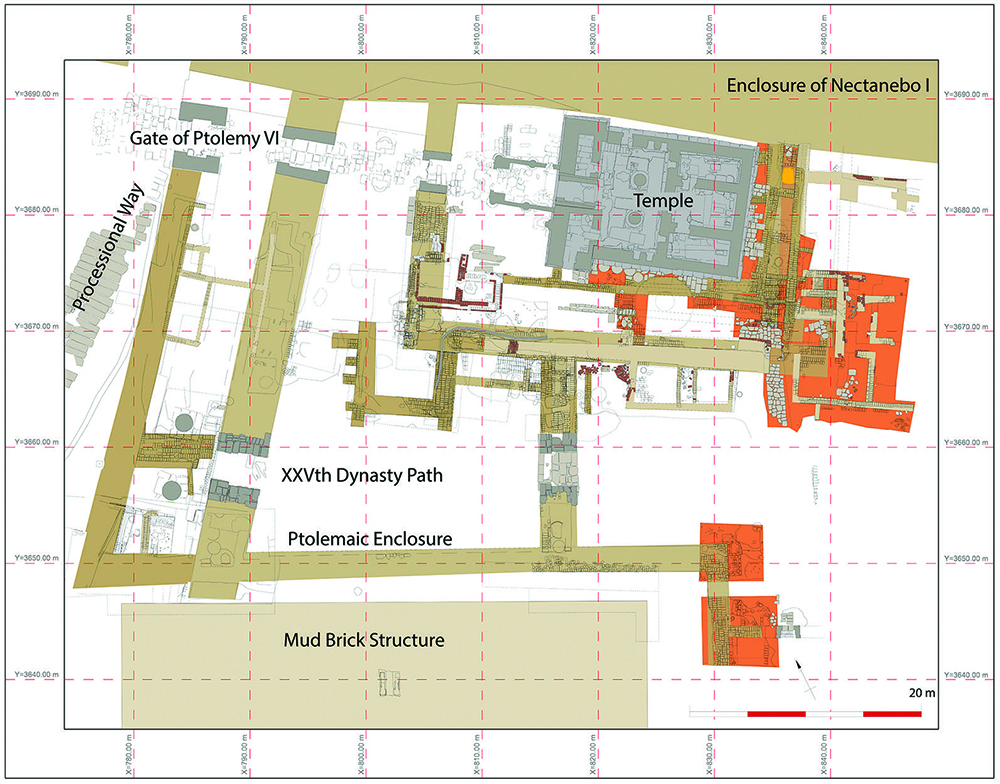
he parts of the Ptah temple that were excavated in 2015.
Bird's-eye view

A bird's-eye view of the temple of Ptah in Karnak.
The favissa
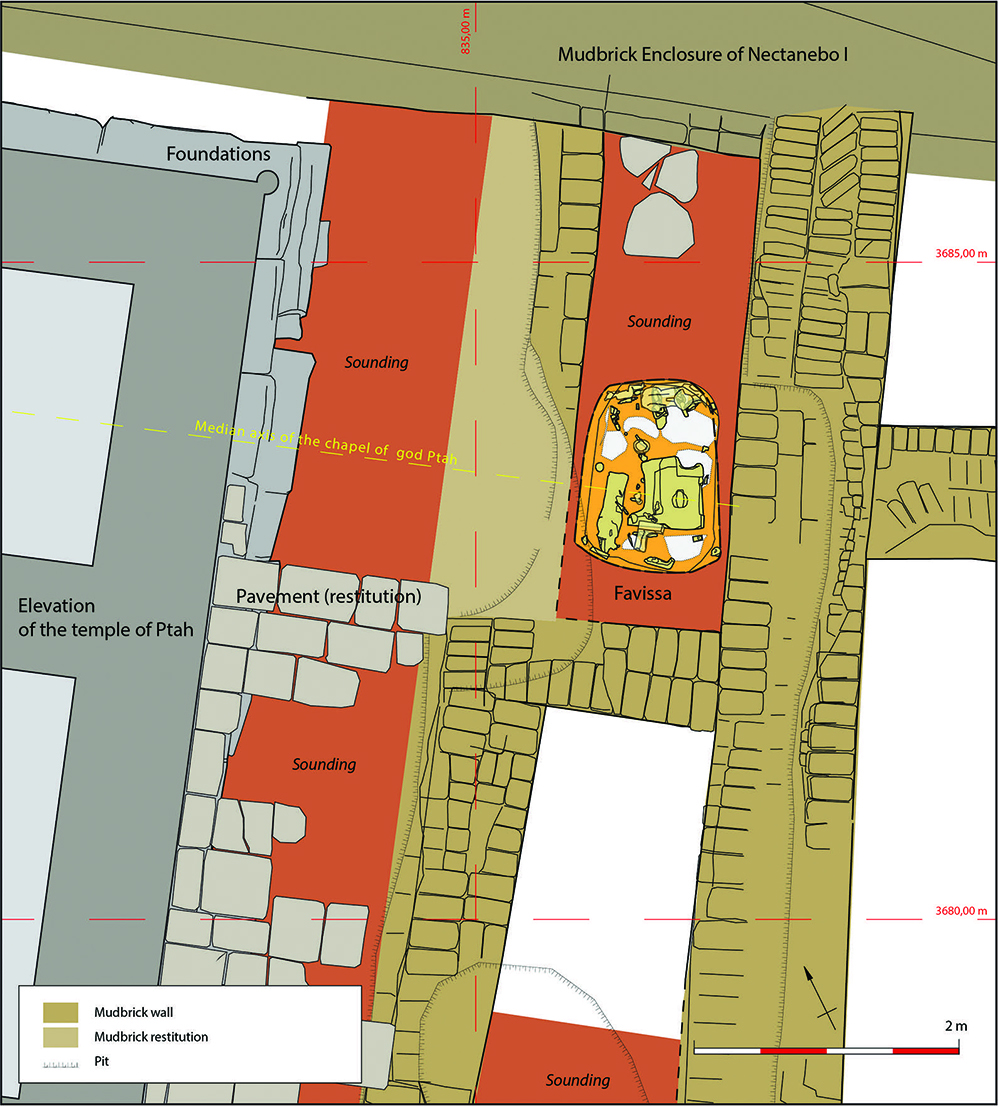
The favissa was located at the back of the temple of Ptah.
[Read the full story on the Egyptian burial here]
3D illustration
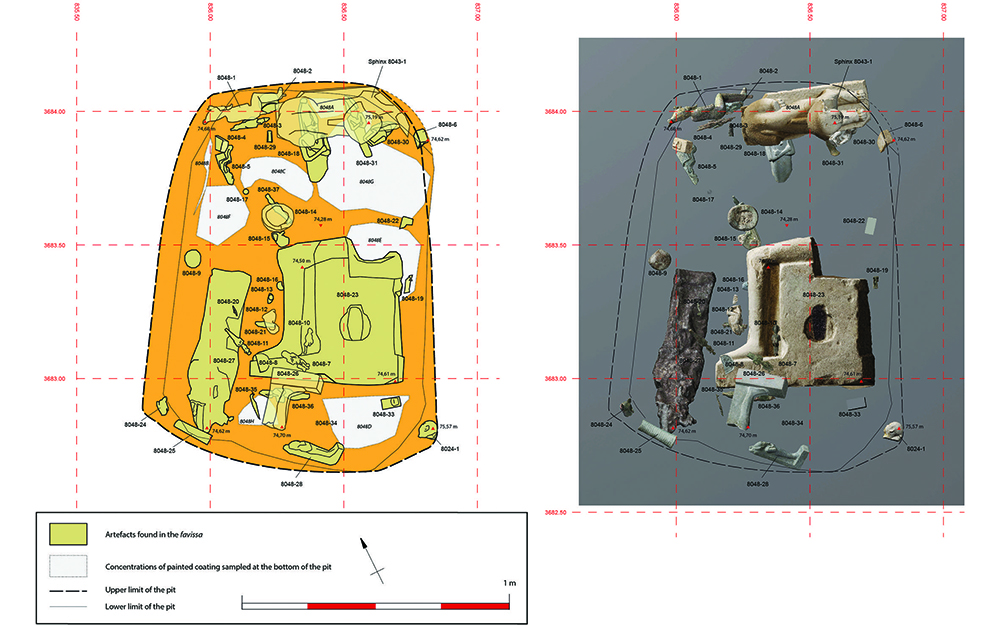
Researchers spent about a month excavating the favissa, carefully noting where they found each artifact. Here, you can see a drawing, the 3D model of the pit and the exact location of its contents.
Sign up for the Live Science daily newsletter now
Get the world’s most fascinating discoveries delivered straight to your inbox.
Osiris statuette
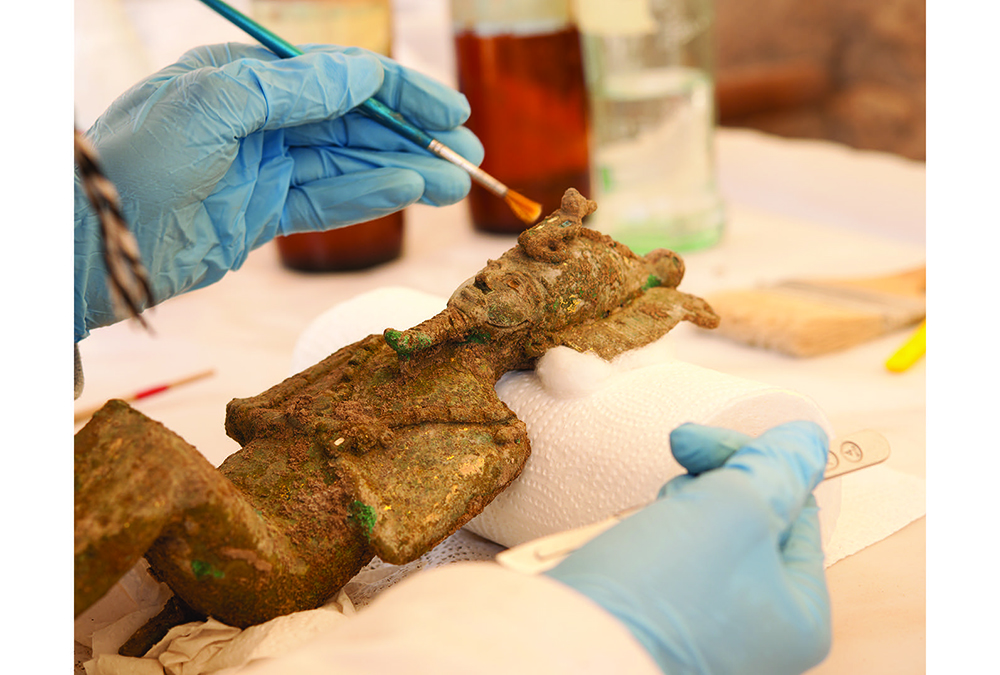
Researchers carefully conserve an Osiris statuette found within the favissa. It's possible the statue of the god Ptah was placed with the Osiris statuettes because Osiris was the god of rebirth.
Treasure trove
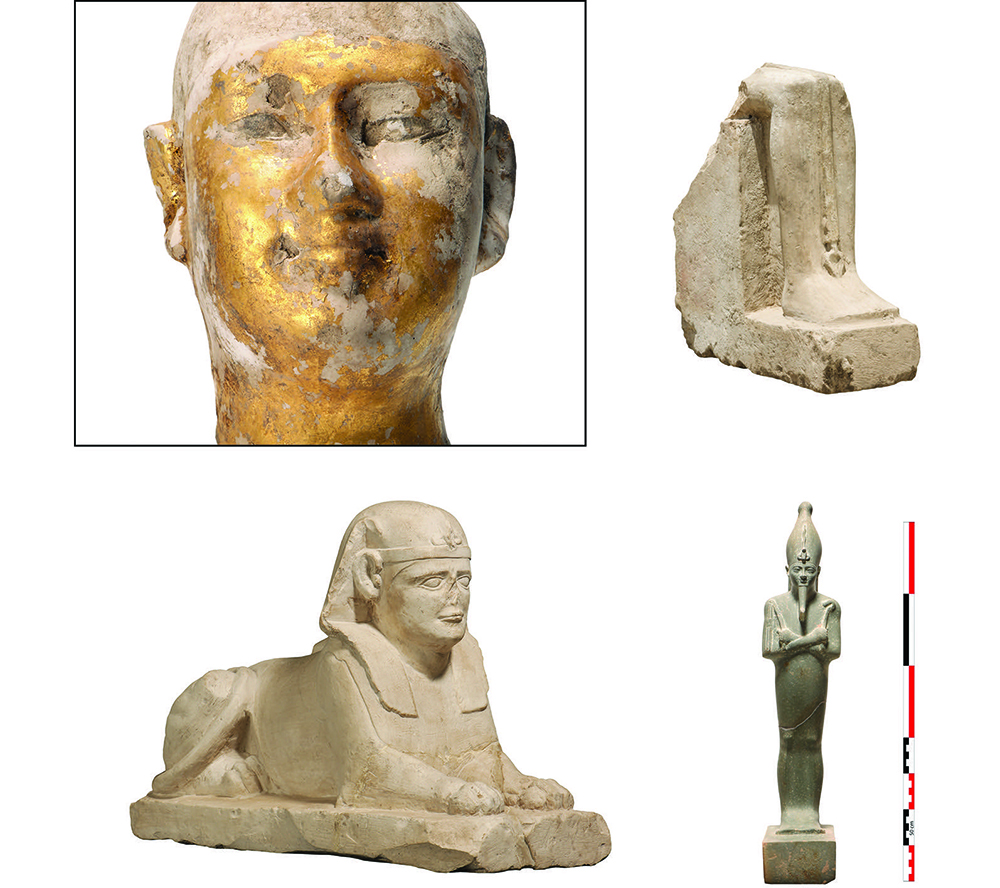
The favissa contained 38 objects, including (starting in the top left and going clockwise) a male head made of gilded limestone, the lower part of the limestone statue of the god Ptah, a statuette of Osiris and a limestone sphinx.
Egyptian excavation
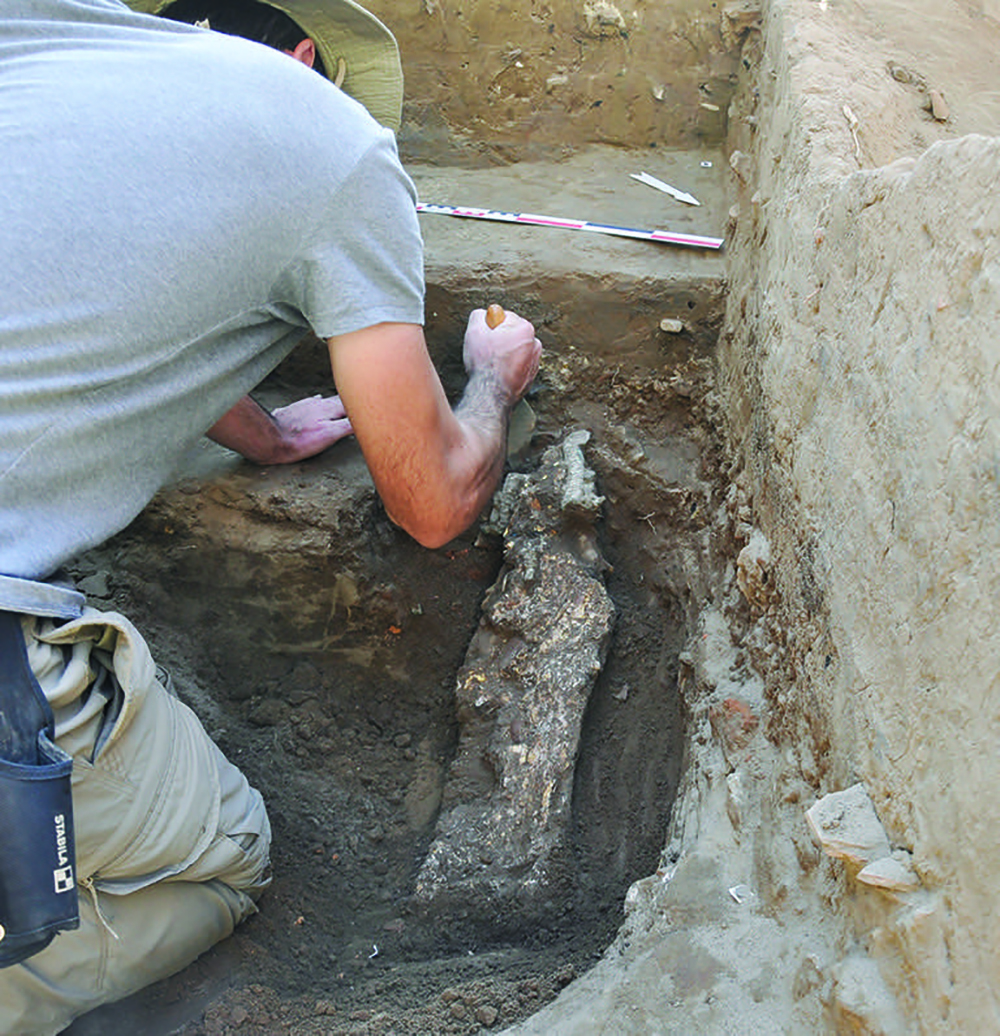
An archaeologist excavates a wooden statuette of Osiris from the favissa.
3D cross section
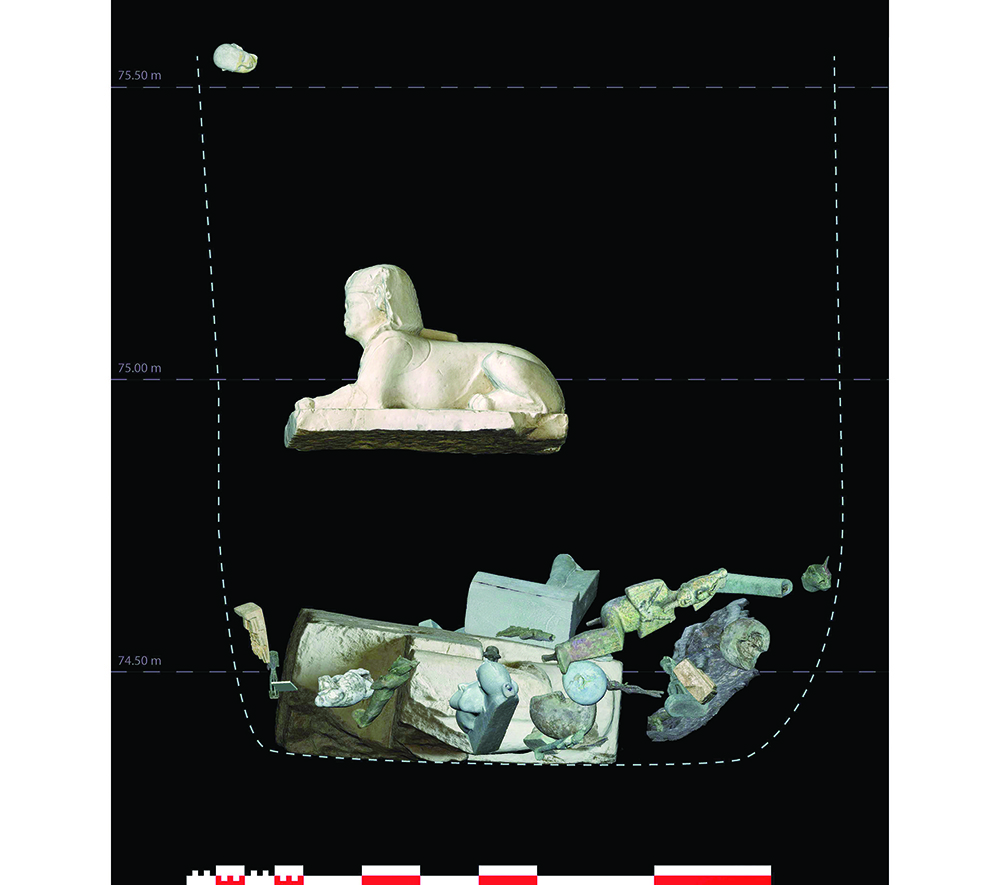
A digital 3D cross section showing the artifacts within the favissa. Notice how the statue of Ptah was at the bottom with the other artifacts, the sphinx was on the second layer and the gilded head was placed at the top.

Laura is the archaeology and Life's Little Mysteries editor at Live Science. She also reports on general science, including paleontology. Her work has appeared in The New York Times, Scholastic, Popular Science and Spectrum, a site on autism research. She has won multiple awards from the Society of Professional Journalists and the Washington Newspaper Publishers Association for her reporting at a weekly newspaper near Seattle. Laura holds a bachelor's degree in English literature and psychology from Washington University in St. Louis and a master's degree in science writing from NYU.










